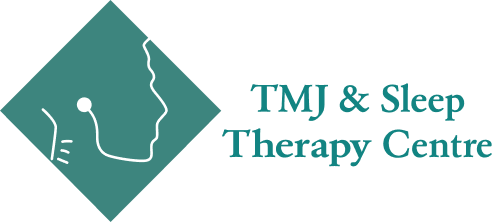Why Adults with Jaw, Head & Neck Pain Should Consider Tongue Tie Evaluation
How We Treat Adult Tongue & Lip Ties
If you have been battling jaw pain, neck and shoulder tension, headaches or fatigue without clear answers, the root cause of the problem may be a tongue or lip tie. Many adults live with a restricted tongue or lip that silently affects how they speak, swallow, breathe and sleep.
Because adult frenulums are thicker and compensation patterns are more entrenched than in children, the effects can ripple throughout the body, contributing to TMJ disorders, poor posture, head & neck pain and sleep disordered breathing.
What Is an Adult Tongue Tie?
Everyone has a small band of tissue called a frenulum under the tongue and behind the upper lip to help stabilize movement. A tongue tie occurs when that tissue is too short or tight, limiting the tongue’s natural range of motion.
Not all tongue and lip ties need surgical intervention. When they do, we perform a functional frenuloplasty. It’s a minimally invasive procedure that releases the deeper muscle fibres while preserving surrounding tissues.
Combined with myofunctional therapy to retrain your tongue, this approach restores mobility and supports long term health.
Signs You May Have a Tongue Tie
A restricted tongue can cause a surprising range of issues. Adults who may benefit from an evaluation often experience:
Chronic neck, shoulder or jaw tension. Tight tongue muscles can pull on surrounding muscles, leading to neck and shoulder pain
Frequent headaches or TMJ pain, clicking or popping
Difficulty maintaining nasal breathing, loud snoring or signs of sleep apnea. Restricted tongues encourage mouth breathing and can disrupt sleep
Forward head posture or a tendency to tilt the head down to compensate
Speech problems, difficulty articulating certain sounds or speaking clearly
Swallowing challenges or the need to drink water to swallow food. Many adults notice easier swallowing after release
Dental issues such as crowding, tooth decay or gum problems as limited tongue movement reduces natural cleaning and saliva production
Persistent mouth ulcers, tongue fatigue or a sense that the tongue does not rest on the palate
If these symptoms sound familiar, a functional assessment can determine whether a tongue or lip tie is contributing to your discomfort.

How We Diagnose Adult Tongue Tie
Our evaluation goes beyond looking under the tongue. We observe how you speak, chew, swallow and breathe. We assess posture and perform a soft tissue examination to gauge tension and range of motion. For a complete picture of overall function, we may use three dimensional imaging to see how your jaw joints and airway are functioning.
We also work with myofunctional therapists who assess tongue strength and coordination. Not every tight frenulum requires release. Our goal is to treat when function is impaired.
Functional Frenuloplasty and Integrated Therapy
Unlike a simple frenectomy, a functional frenuloplasty releases restrictive tissues and muscle fibers through a small incision or laser procedure. The treatment is quick and minimally invasive, often performed with a CO₂ laser to minimize bleeding and discomfort.
Here is what to expect:
- Pre release preparation: Adults typically work with a myofunctional therapist before the procedure. Exercises help soften tight tissues and teach proper tongue posture, preparing you for a smoother release
- Minimally invasive release: Using precise surgical techniques and local anesthesia, we gently free the tongue and lip from the floor of the mouth and upper gums. Most patients feel pressure but little pain
- Post release therapy: Retraining the tongue and facial muscles is crucial. Myofunctional therapy teaches new swallowing and breathing patterns to prevent reattachment and fully utilize the new mobility
- Collaborative care: Depending on your symptoms, we may integrate regenerative injections, laser therapy, airway orthopedic development & facial development or osteopathic bodywork to address inflammation, correct posture and support healing
Benefits of Releasing a Tongue Tie in Adults
Releasing a restrictive frenulum can bring relief in surprising ways:
Reduced neck and shoulder tension
Improved breathing and sleep
Healthier oral environment and increased saliva production
Easier swallowing and clearer speech
Enhanced TMJ and facial comfort
Better posture and less fatigue
Benefits of Releasing a Tongue Tie in Adults
- Comprehensive adult evaluation – We combine functional exams, imaging and airway assessment to identify the true cause of your symptoms.
- Specialized surgical expertise – Dr. Sahar and our surgical team use advanced laser and microsurgical techniques for precise, minimally invasive releases.
- Integrated myofunctional therapy – Our therapists work with you before and after the procedure to retrain your tongue, lips and facial muscles for lasting results.
- Collaborative care – We partner with osteopaths, orthodontists or respect the airway and regenerative medicine specialists to address all factors contributing to your pain or dysfunction.
- Patient centered experience – From gentle sedation options to thorough aftercare, we prioritize your comfort and understanding at every step.
For more information on Myofunctional Therapy, visit our Myofunctional Therapy page.
We also offer complementary treatments: learn about Regenerative Medicine, Laser Therapy and Sleep Diagnostics on our adult treatment pages.
Parents researching tethered oral tissues for younger patients should see our pediatric Tongue and Lip Tie Care page for early intervention and child specific protocols.
Frequently Asked Questions About Adult Tongue & Lip Ties
How do I know if I really need a tongue tie release?
Is the procedure painful?
How long is recovery?
Do I have to do exercises?
Can a tongue tie cause TMJ pain or headaches?
Will my insurance cover the procedure?
For more information on Myofunctional Therapy, visit our Myofunctional Therapy page [LINK].
We also offer complementary treatments: learn about Regenerative Medicine [LINK], Laser Therapy [LINK] and Sleep Diagnostics [LINK] on our adult treatment pages.
Parents researching tethered oral tissues for younger patients should see our pediatric Tongue and Lip Tie Care page [LINK] for early intervention and child specific protocols.
